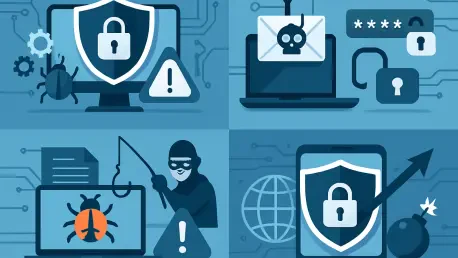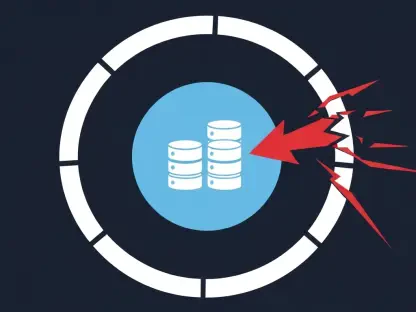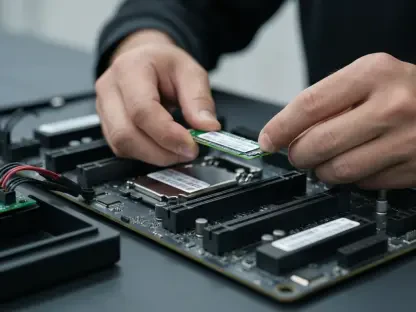I’m thrilled to sit down with Oscar Vail, a renowned technology expert with a deep passion for cutting-edge fields like quantum computing, robotics, and open-source innovation. With a career dedicated to staying ahead of the curve in the ever-evolving tech landscape, Oscar brings a unique perspective to today’s pressing challenges. In this interview, we dive into the complexities of modern cybersecurity, exploring why threats are growing more sophisticated, how businesses are struggling despite heavy investments in security tools, and what it truly means to simplify defenses without sacrificing protection. Join us as we unpack these critical issues and uncover actionable insights for navigating a supercharged risk environment.
Can you paint a picture of why cyber threats are becoming so much more serious and complex in today’s digital world?
Absolutely. The reality is that cyber threats are evolving at an unprecedented pace due to a mix of technological advancements and the increasing value of digital assets. Hackers now have access to more powerful tools, including AI-driven attack methods, which allow them to scale their efforts and target vulnerabilities with pinpoint accuracy. We’re seeing a rise in ransomware, supply chain attacks, and deepfake-driven social engineering, where attackers manipulate trust in ways that are harder to detect. Over the past few years, the sophistication has jumped significantly—think nation-state-level tactics trickling down to smaller criminal groups. The scale is also staggering; with more devices connected than ever, the attack surface for businesses has exploded, making it a constant game of catch-up.
What do you think is driving the high rate of cybersecurity incidents—88% of organizations last year, according to recent reports—despite all the money being poured into security?
It’s a frustrating paradox, isn’t it? The core issue is that spending doesn’t always equal effectiveness. Many organizations adopt a reactive mindset, throwing money at every new tool or trend without a clear strategy. This leads to bloated security stacks with overlapping functions that don’t integrate well. A lot of these investments are also misdirected—think expensive solutions for niche threats while basic hygiene like patching or employee training gets neglected. Companies need to shift focus from just buying more to optimizing what they have, ensuring their tools align with real risks and business goals.
There’s data suggesting over half of IT leaders find their security patching systems too complicated to manage. What’s behind this growing complexity?
The complexity often stems from the sheer number of tools and systems in play. Over the years, businesses have layered solution after solution, each addressing a specific threat or compliance need, but they rarely talk to each other. This creates a patchwork environment where IT teams struggle to keep up with updates across disparate platforms. It’s not just the volume of tools; it’s also the lack of interoperability and the specialized expertise required to manage them. When patching becomes a logistical nightmare, it delays critical updates, leaving systems exposed far longer than they should be.
Why do you think so many organizations aren’t getting good value from their security tools, with half of IT leaders admitting features go unused?
A big part of this is poor planning and mismatched priorities. Many companies rush to buy tools based on hype or a competitor’s breach, without first assessing their own environment and needs. As a result, they end up with powerful platforms but lack the staff or training to use advanced features. There’s also a cultural issue—security is sometimes seen as a checklist rather than a continuous process, so tools are deployed and forgotten. To get real value, businesses need to start with a clear understanding of their risks, train their teams, and regularly audit usage to ensure they’re leveraging every capability they’ve paid for.
You’ve pointed out that the complexity of security systems can itself become a vulnerability. Can you dive deeper into how that happens?
Sure, complexity breeds blind spots. When you have too many tools, dashboards, and alerts, IT teams get overwhelmed by noise and can miss critical signals of an attack. Decision-making slows down because there’s no single source of truth—data is fragmented across systems. This creates gaps where threats can linger undetected. The damage can be severe; a delayed response to a breach might mean data loss, financial hits, or reputational damage that takes years to recover from. Essentially, when systems are too complicated, they hinder the very protection they’re meant to provide, turning a defense mechanism into a liability.
Simplifying cybersecurity is often talked about as a solution. What does that look like for a business trying to stay secure without weakening its defenses?
Simplifying isn’t about doing less; it’s about doing smarter. It starts with a hard look at what you’re protecting and why—mapping out your digital assets and prioritizing based on business impact. From there, consolidate tools where possible, using integrated platforms that cover multiple areas like endpoint security and threat detection in one framework. This boosts visibility and cuts down on management overhead. Automation is also key; it can handle repetitive tasks like monitoring or patching, freeing up teams for strategic work. Finally, align purchases with outcomes—don’t buy a tool just because it’s shiny; make sure it solves a specific problem. It’s about creating a lean, focused security posture that’s easier to manage and more effective.
Why is maintaining an accurate inventory of digital assets so crucial for a strong cybersecurity strategy?
Knowing what you have is the foundation of any defense. An accurate inventory of digital assets—hardware, software, data, and connections—gives you a clear picture of your attack surface. Without it, you’re blind to where risks might be hiding, like an outdated server or an unpatched application. It’s also vital for prioritizing; you can focus resources on protecting what’s most critical to your business. Plus, when an incident happens, a detailed inventory lets you respond faster, minimizing damage. It’s basic cyber hygiene, but so many organizations skip it, and that’s often where breaches start.
Looking ahead, what’s your forecast for the future of cybersecurity in this increasingly complex risk environment?
I think we’re at a turning point. The future of cybersecurity will hinge on balance—balancing innovation with manageability. We’ll see a stronger push toward integrated, AI-driven security platforms that can predict and respond to threats in real time, reducing human error and overload. At the same time, regulations will tighten globally, forcing businesses to be more transparent and accountable, which is a good thing but will add pressure. I also expect outsourcing and automation to become standard as companies realize they can’t do it all in-house. Ultimately, the winners will be those who embrace simplicity without sacrificing depth, building resilient systems that can adapt to whatever threats come next.









